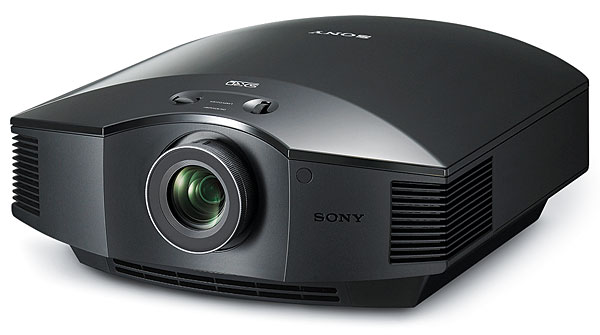Sony VPL-HW65ES 3D SXRD Projector Review Page 2
 Some additional adjustments that helped to improve the VPL-HW65ES’s picture included Low Smooth Gradation, plus a shot of Advanced Reality Creation. (Pushing the Reality Creation settings too high can give the picture a too-crisp and unreal appearance.) The projector’s Motionflow feature worked best when set to True Cinema, which allows for accurate display of 24p film-based content. Smooth High and Smooth Low Motionflow settings both ended up adding a degree of soap-opera effect without necessarily showing an improvement with motion-resolution test patterns. Impulse, another Motionflow setting that employs black frame insertion, did serve to improve motion resolution, however.
Some additional adjustments that helped to improve the VPL-HW65ES’s picture included Low Smooth Gradation, plus a shot of Advanced Reality Creation. (Pushing the Reality Creation settings too high can give the picture a too-crisp and unreal appearance.) The projector’s Motionflow feature worked best when set to True Cinema, which allows for accurate display of 24p film-based content. Smooth High and Smooth Low Motionflow settings both ended up adding a degree of soap-opera effect without necessarily showing an improvement with motion-resolution test patterns. Impulse, another Motionflow setting that employs black frame insertion, did serve to improve motion resolution, however.
Performance
With all of the VPL-HW65ES’s picture settings dialed in, I settled down to watch a few movies. When I cued up Kenneth Branagh’s recent Disney Cinderella reboot on Blu-ray, both the skintones and the green grass and foliage came across as completely natural in opening exterior shots where Ella and her parents play blissfully in the yard. Brightness is definitely one of the projector’s assets: The picture’s bright, punchy quality made the colors of flowers and patterns on the dresses worn by Ella and her mother really pop.
The VPL-HW65ES managed dark images equally well. In a scene where Ella—relegated to servant status after her father has died—shines the shoes of her stepmother and sisters by candlelight, shadows in the dim space had excellent depth and looked well defined. With the projector’s Advanced Iris Dynamic Control set to Limited, I saw no iris pumping effects; transitions between dark and light scenes came off smoothly.
The Sony also did an impressive job with streaming video sources. I watched Jessica Jones, a Netflix original series based on the Marvel Comics character, and dark environments like the bar that Jessica hangs out in and her stark, gloomy office (the norm for a hard-drinking, ass-kicking P.I.) offered the same punchy look as dark scenes from the Disney Blu-ray. Here, the projector’s Advanced Reality Creation adjustments helped a good deal to improve image quality. Boosting the Resolution setting added some sharpness without making objects look too hard-edged, while boosting Noise Filtering helped give the picture an overall more solid and clean look without reducing detail.
The projector’s substantial light output served it well for 3D viewing. When I watched Hugo, one of my standard 3D reference discs, the picture had satisfying brightness and good contrast. While I did notice crosstalk in a few scenes, the overall impressive 3D performance regularly delivered a sense of looking deep into the picture frame.

Encouraged by my experience with Hugo, I moved on to watching “The Day of the Doctor” the 50th-anniversary episode of Doctor Who on Blu-ray 3D. (This BBC special was actually shot in 3D, as opposed to being converted to that format in post-production like a number of Hollywood movies.) In one scene in a museum where the Eleventh Doctor (Matt Smith) is shown a painting of the fall of Arcadia, the layered world depicted in the painting extended well into 3D space; it was possibly one of the best examples of the 3D medium I’ve yet seen. And in another scene where the Tenth Doctor (David Tennant) plunges through a time portal on horseback into England circa 1562, the rural landscape he rides into displayed an excellent sense of layering.
Conclusion
It used to be you had to pay big bucks for a projector capable of beaming bright enough images that you didn’t feel the need to watch in a completely dark room. But those days are gone. A projector like Sony’s $3,999 VPL-HW65ES can deliver ample enough light output that it can be used in a mixed-use room where viewers might prefer to only dim their lights only slightly, or even watch during daytime hours. The projector’s brightness reserves also make it a fine choice for 3D viewing, where the addition of active shutter glasses typically has the effect of making pictures look overly muted and dark. Add to that Sony’s image-enhancing Advanced Reality Creation processing, and it may not even occur to you that the projector you’re using isn’t 4K-capable.





























































